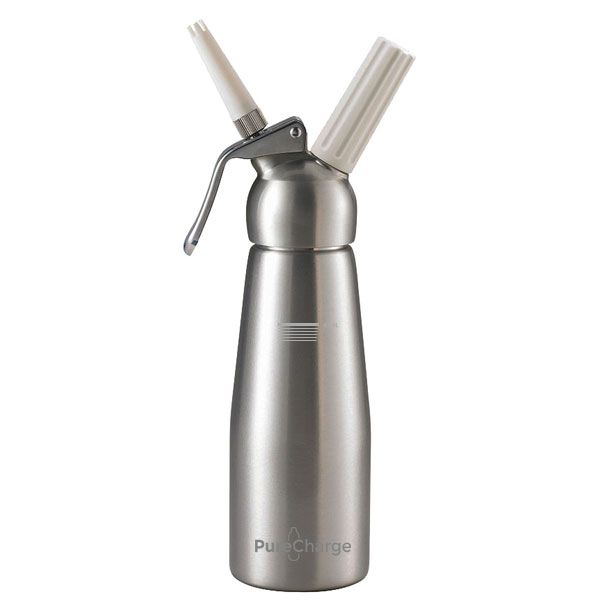It looks like with everything else going on in the world today, we may also be facing a Nitrous oxide (N2O) can whipped cream shortage. Because of whipped cream can factory shutdowns.
You may be wondering what this means to you and your desserts that simply won’t be complete without that needed finishing delicious touch. Luckily for you, not all is lost. Instead of buying whipped cream in a can, you can open your bottle of heavy cream and easily whip your own cream with a nitorus oxide whipper. However, before we get into that, it would be a mistake to remind you that not all cream can be whipped.
How Cream is Made
The storebought cream that you have stored in your fridge right now is separated from milk before it is pasteurized to kill bacteria and shipped to your local supermarket.
The method of pasteurizing is referred to as ultra-pasteurization, as it is heated at a very high temperature for a short amount of time. This has been proven to remove the most amount of bacteria and will be safe for you to consume.
This cream is also homogenized to break down the fat molecules to prevent them from sticking together. Many name brands of cream will also contain additives and stabilizers to get that creamy consistency.
The Three Types of Cream: Heavy, Whipping, and Light
If you look closely at the dairy section (more specifically, the cream) of your supermarket, you may notice there are multiple types available for purchase. It is not all heavy cream, and it is broken down by the overall amount of fat in the product.
Heavy cream – contains 36% fat
Whipping cream – has anywhere between 30% and 36% milkfat
Light Cream – between 18% and 30% fat
Half and Half – this half cream and half milk product contains around 11%-18% milkfat
With all of the cream products available, you may be wondering which product you should use to make whipped cream. The answer is either heavy or whipping cream. According to experts, you need to have at least 30% fat to turn cream into whipped cream.
The fat found in these types of cream is also what allows you to warm it and use it in your cooking recipes without it curdling. That said, the less fat whipped cream does have a purpose. It is great for your morning cup of coffee and pairs well with some recipes.
Speaking of coffee, What is Creamer?
Creamer is a liquid that we put into our coffee to add more flavor, sweetness, and cut down the natural bitter tones. Oddly enough, creamer may or may not contain any real cream. You may have noticed that there are a lot of variations of cream in the supermarket.
This is partly because there is no real requirement by the FDA for what creamer has to contain, and no milkfat prerequisite. That’s not to say that there are no coffee creamers that contain real cream because there are. Generally, they will be made with cream, oil, and water, or non-dairy milk; such as coconut or almond milk.
And even if your creamer does not contain dairy, it may have the milk protein casein. Often the case in this instance is that the FDA will require manufacturers to state on the label that it contains “a milk derivative”.
How Long Does Cream Last?
As with other perishable products, you should always go off of what the date on the container states. Generally, an unopened container of cream will last for up to 18 days. Ultra-pasteurized cream can last up to two months; if properly stored.
With that said, once the cream has been opened you will generally have a max freshness of up to 2 weeks. Like milk, the best practice is to smell the cream before use if there is any doubt in your mind. If it has gone bad, it will have a sour smell.
Half and half will have a much shorter period of freshness, and once opened should be used within four days. Whereas coffee creamer can last for up to three weeks. As for the whipped cream that you make yourself, you will want to use it within a day.

